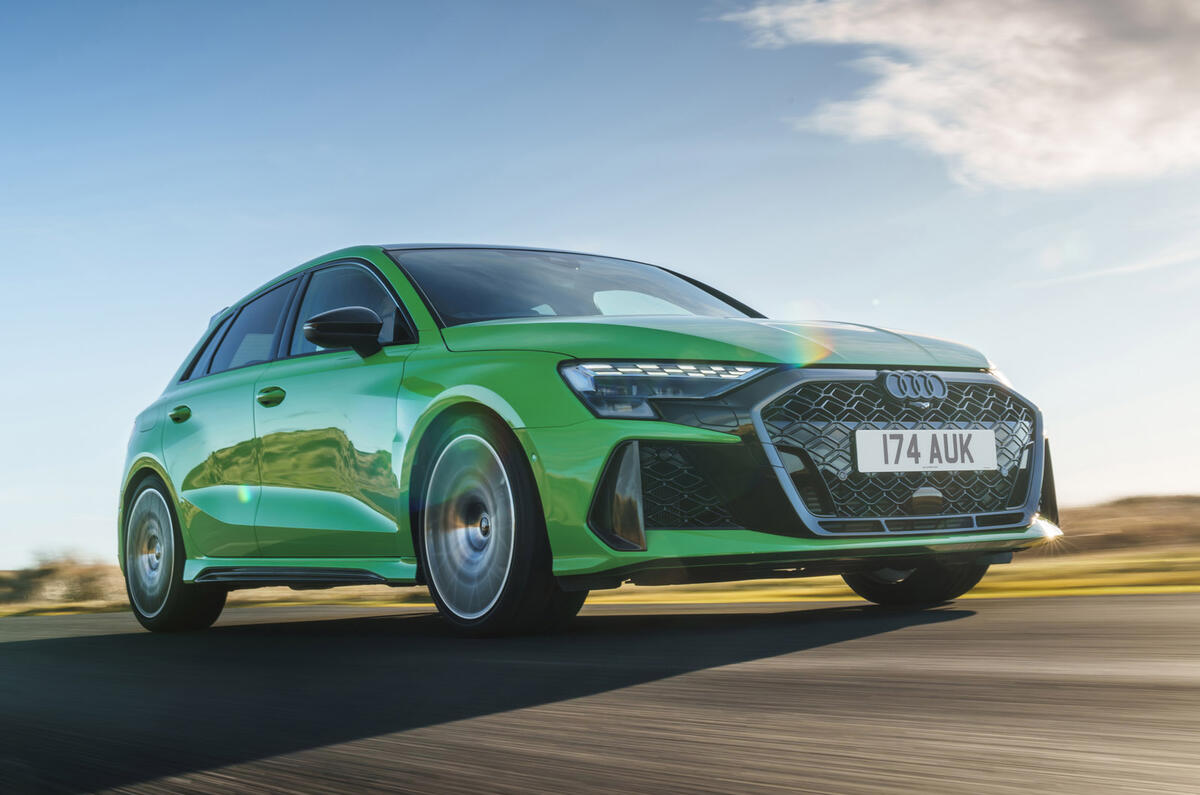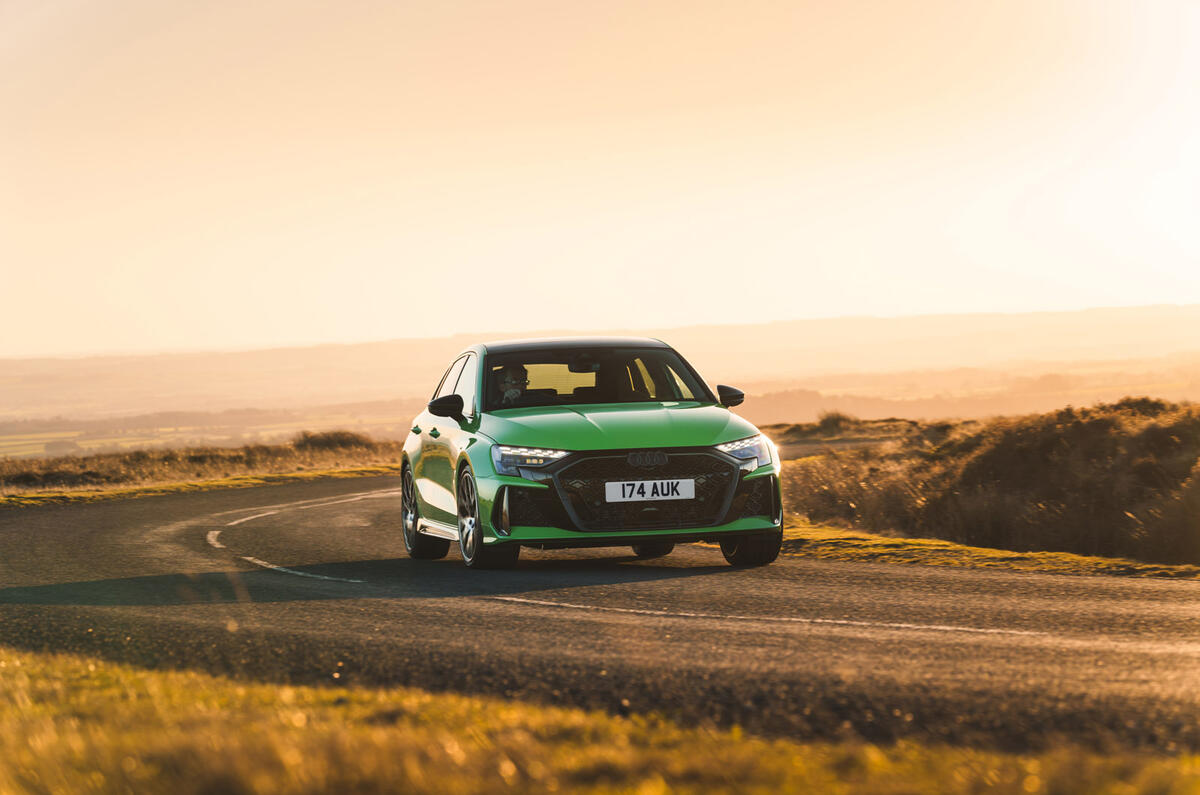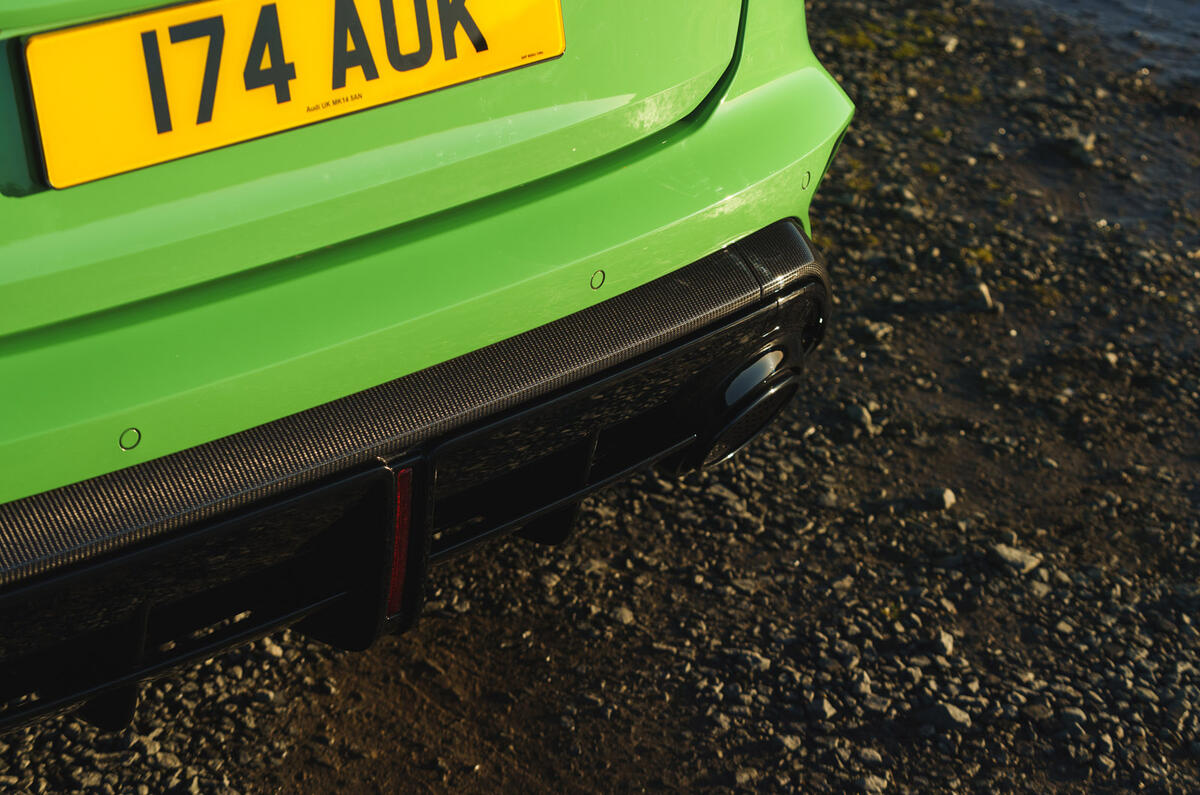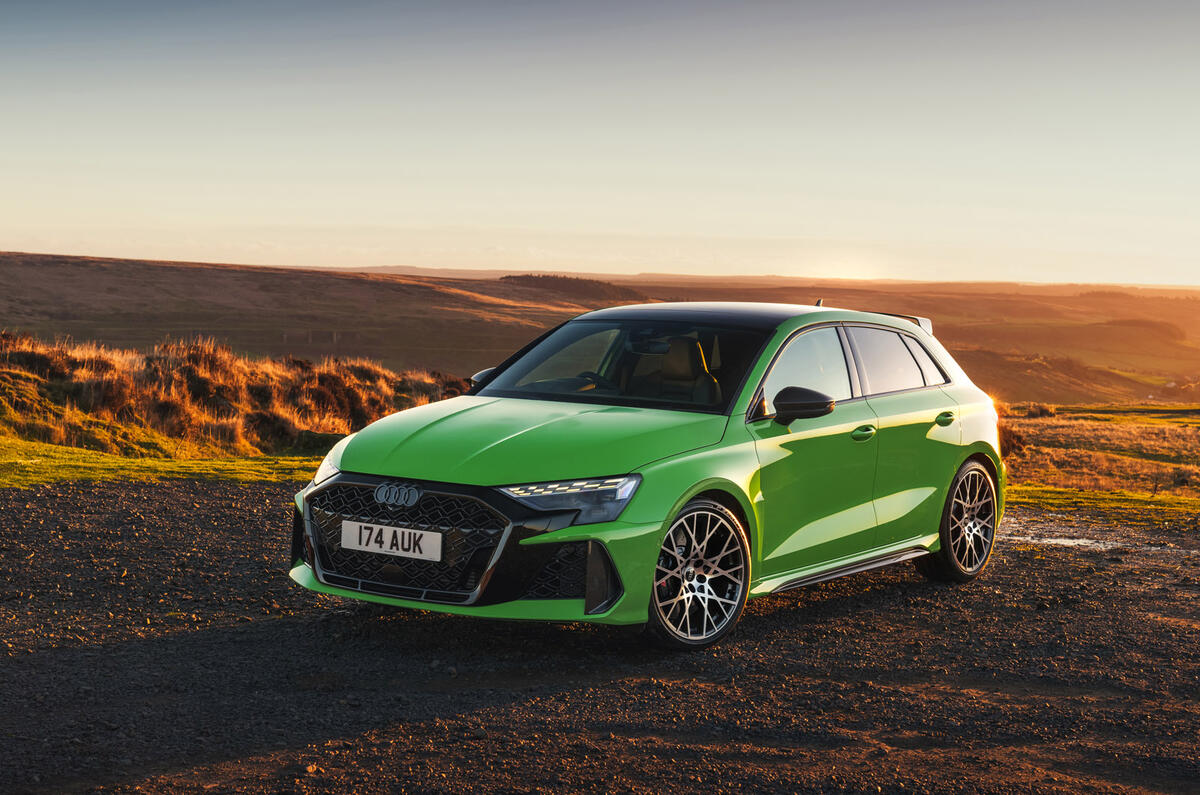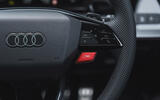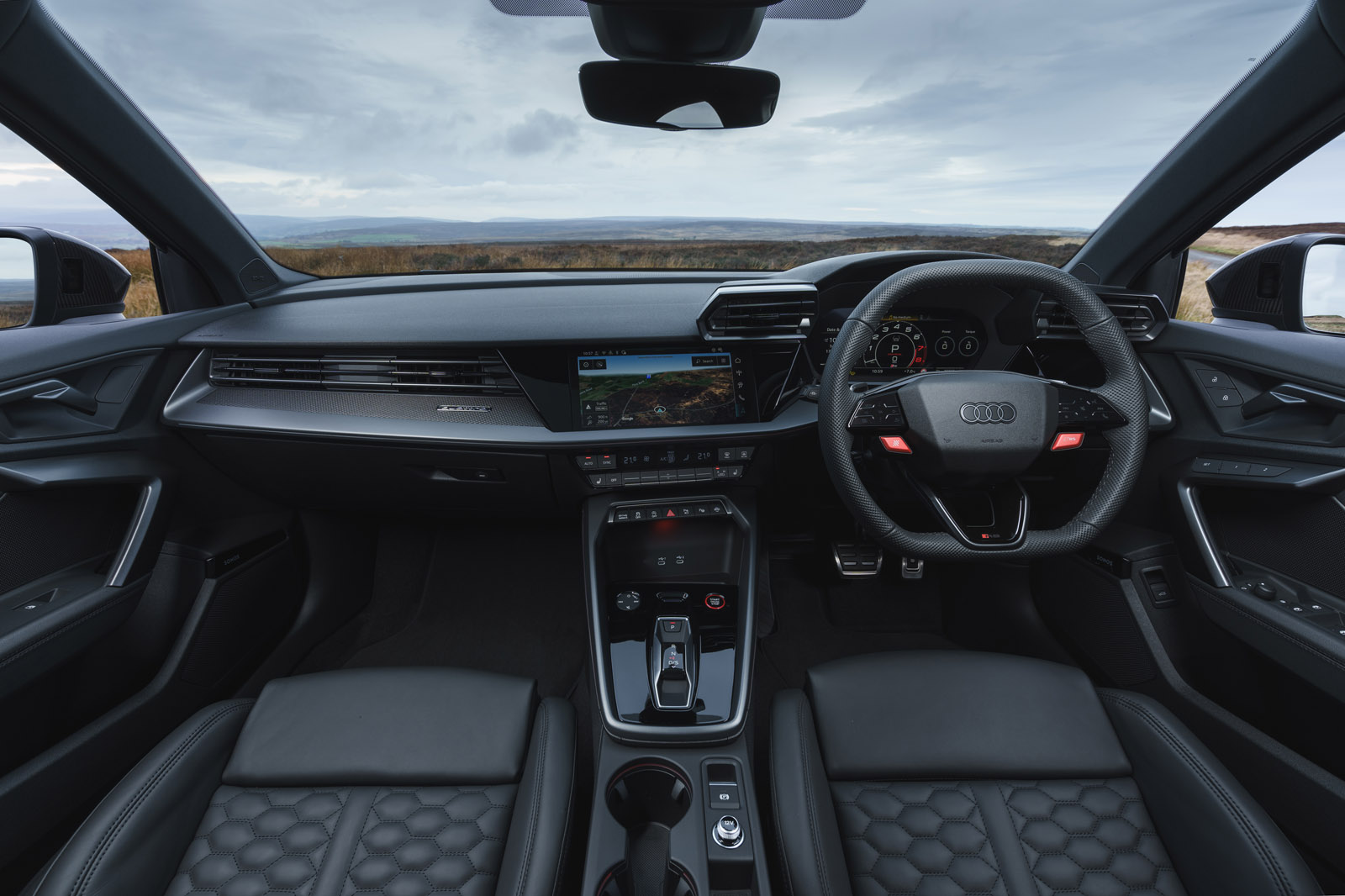As the current A3 is one of Audi’s older models, it finds itself between two different design philosophies. Inside, it is not exactly an Audi of the old school with outstanding materials and lots of physical controls, but neither has it adopted the radically screen-heavy approach of the latest A5 and A6.
For its class, it finds quite a healthy balance, with a slightly unusual constellation of air vents, some pleasing matt carbonfibre trim, and a useful selection of physical controls for functions such as the climate control, drive modes, mirror controls and lights.
Infotainment is covered by a 10.1in central touchscreen and a digital driver display. The former is logically laid out, with calm graphics and a good amount of configurability, but doesn’t have the snappiest responses. The gauge cluster lets you choose from a number of layouts, some of which are clear and attractive. Engaging one of the sportier drive modes automatically switches it to one of the messier views, though.
Generally, the materials and build quality reach a high standard for the segment, though it’s not entirely free of scratchy or gloss black plastics. Rear passengers may feel slightly like they’re in second class, because their door cappings are made of hard plastic. They get their own air vents and USB ports, but space is not exactly generous – leg room is notably tighter than in a BMW 1 Series, and so is boot space.

The front is where you really want to be. The seats and driving position are mostly standard-issue MQB, which means that you can sit quite low for a front-wheel-drive hatchback and the seats are multi-adjustable and mostly comfortable, though particularly tall drivers may wish for a little more leg room.
Here, there are two novelties. The first is the steering wheel, which is borrowed from the E-tron GT and is no improvement over the round, button-rich one in the pre-facelift car. With its thin rim, the new one is nice enough to hold, but the flat top and bottom are needlessly awkward, and the touch-sensitive buttons are susceptible to accidental activation. The new shortcut buttons to activate your individual drive mode and the maximum-attack RS mode are useful, at least.
The RS3 also gains the option of the ‘RS bucket seats’, which were introduced on the not-for-UK limited-edition Performance Edition. Although we have not had the opportunity to try them, we suspect they would be a worthwhile option if you’re fairly slim and are looking to use your RS3 on track, since some testers found themselves sliding around in the standard seats.



